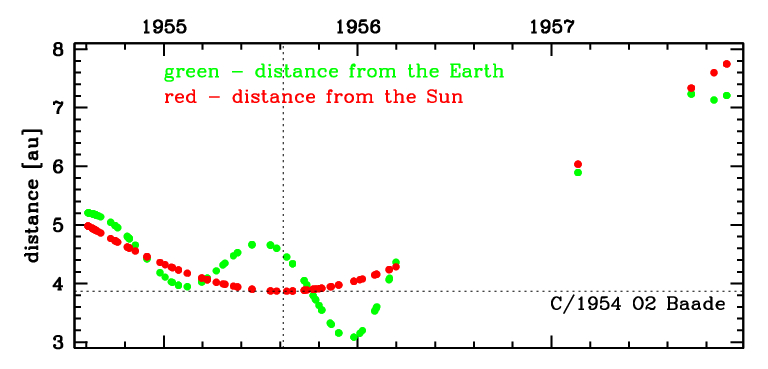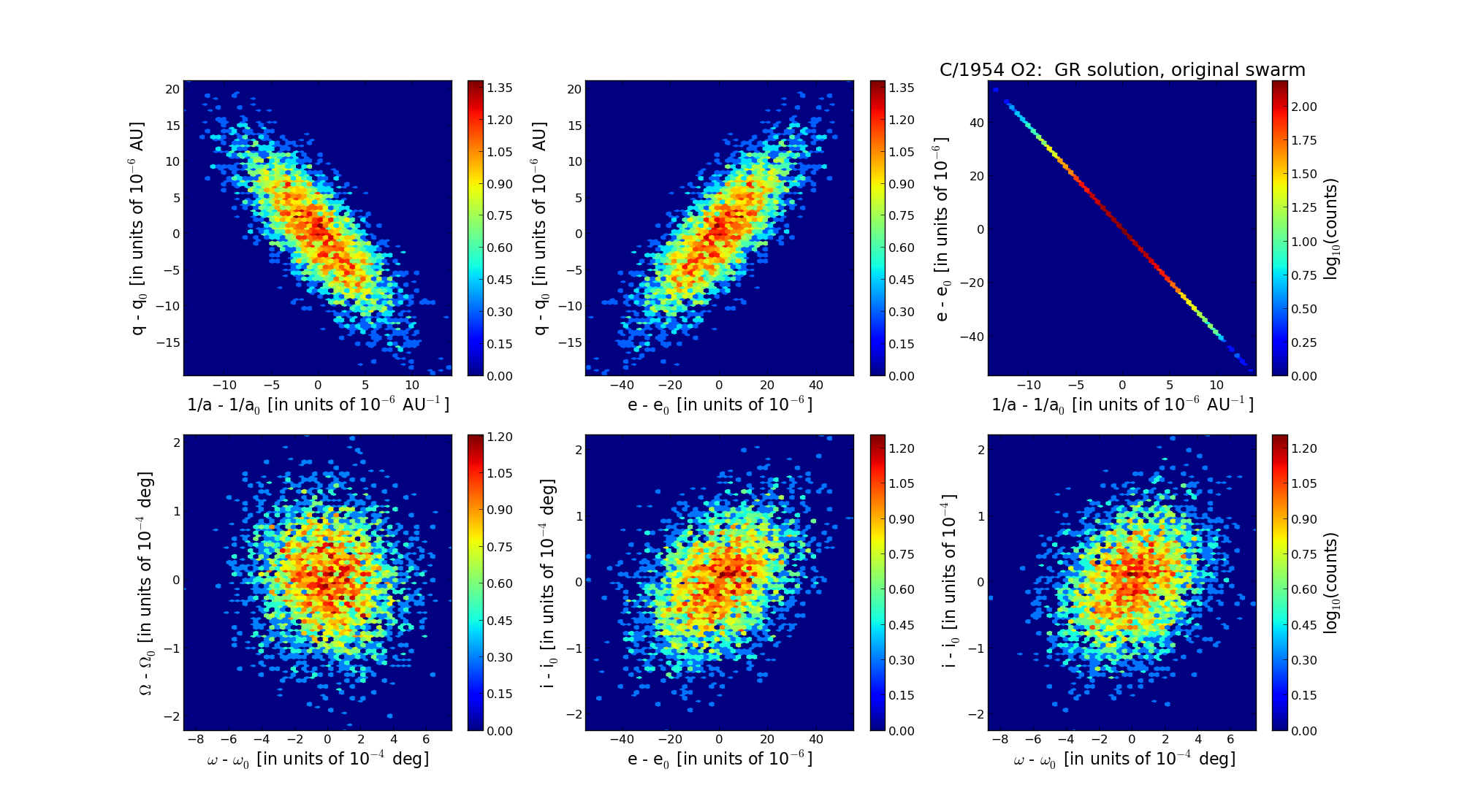C/1954 O2 Baade
more info
Comet C/1954 O2 was discovered on 31 July 1954, about one year before perihelion passage, and was last seen on 26 November 1957 [Kronk, Cometography: Volume 4].
The comet made its closest approach to the Earth on 15 December 1955 (3.07 au), four months after perihelion passage.
Solution given here is based on data spanning over 3.3 yr in a range of heliocentric distances: 4.98 au – 3.87 au (perihelion) – 7.75 au.
This Oort spike comet suffers small planetary perturbations during its passage through the planetary system that lead to a tighter future orbit (see original and future barycentric orbits).
See also Królikowska and Dybczyński 2017.
The comet made its closest approach to the Earth on 15 December 1955 (3.07 au), four months after perihelion passage.
Solution given here is based on data spanning over 3.3 yr in a range of heliocentric distances: 4.98 au – 3.87 au (perihelion) – 7.75 au.
This Oort spike comet suffers small planetary perturbations during its passage through the planetary system that lead to a tighter future orbit (see original and future barycentric orbits).
See also Królikowska and Dybczyński 2017.
| solution description | ||
|---|---|---|
| number of observations | 87 | |
| data interval | 1954 08 10 – 1957 11 26 | |
| data type | perihelion within the observation arc (FULL) | |
| data arc selection | entire data set (STD) | |
| range of heliocentric distances | 4.98 au – 3.87 au (perihelion) – 7.75 au | |
| detectability of NG effects in the comet's motion | NG effects not determinable | |
| type of model of motion | GR - gravitational orbit | |
| data weighting | YES | |
| number of residuals | 156 | |
| RMS [arcseconds] | 1.19 | |
| orbit quality class | 1a | |
| orbital elements (barycentric ecliptic J2000) | ||
|---|---|---|
| Epoch | 1651 11 22 | |
| perihelion date | 1955 08 13.18163304 | ± 0.00137111 |
| perihelion distance [au] | 3.86707539 | ± 0.00000597 |
| eccentricity | 0.99981772 | ± 0.00001524 |
| argument of perihelion [°] | 144.684347 | ± 0.000216 |
| ascending node [°] | 265.289915 | ± 0.000059 |
| inclination [°] | 100.342539 | ± 0.000059 |
| reciprocal semi-major axis [10-6 au-1] | 47.14 | ± 3.94 |
| file containing 5001 VCs swarm |
|---|
| 1954o2a5.bmi |

